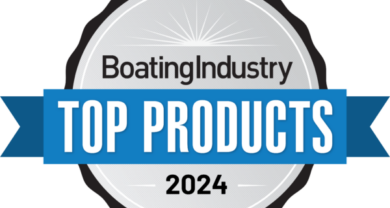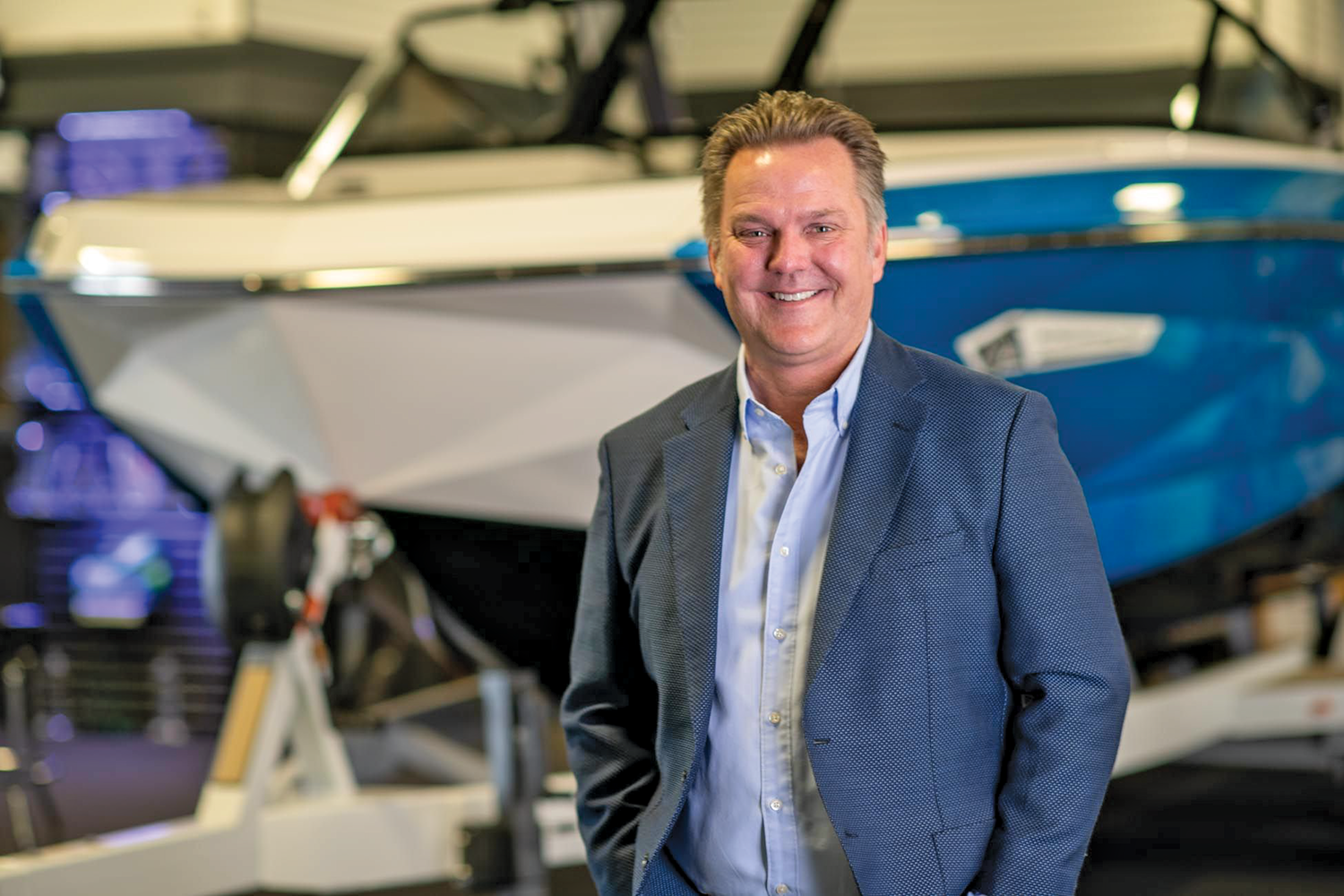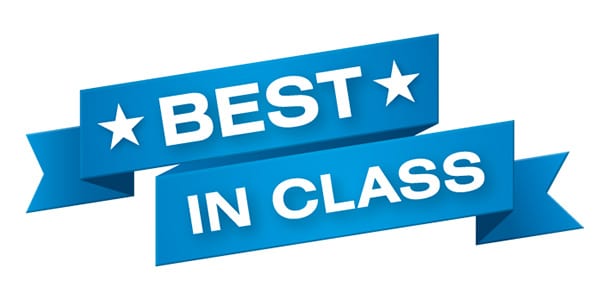Out of the ashes
On a late summer’s evening in 1999, the Monterey Boats production facility in Archer, Fla., burned.
Explosions lifted 55-gallon drums more than 100 feet into the night as firefighters arrived, and the ferocity of the blaze, as well as the potential danger from the chemicals involved, forced the evacuation of most of the town’s residents — 1,200 in all.
No one was seriously injured in the blaze, which was later found to have been sparked by a faulty electric meter near a resin tank, but much of the plant was destroyed.
Lou Vazquez, Monterey’s director of sales and marketing, says the company lost eight months of cruiser production due to the fire. He recalls the “rude awakening” he received when news of the blaze crawled across the bottom of the television set in his home as he was watching a Monday Night Football game.
Fortunately, Monterey was already in the process of building additional facilities in nearby Williston, Fla. — where the company is now based — and the staff was able to rally together in the fire’s wake, rebounding quickly from the setback.
“It pretty much plugged us up for cruiser production, but we weathered the storm and came back better than ever,” Vazquez said. “It was one of those things that happens in life and in this industry. It didn’t kill us, it made us stronger.”
Turning radius
Flexibility and agility.
Those are the attributes that have allowed Monterey to not only survive during its 20-year history, but prosper through the changing economic climate and overcome the unforeseen obstacles as well.
Actually, prosperity may not be a strong enough word for a company that generated $250,000 in revenue in 1985 — its first year in business — but expects its revenue to exceed $100 million this fiscal year. A company that now has 130 dealers worldwide, signing 32 in the last year alone, and has added more than a hundred thousand square feet to its production capacity in the last several months to help meet demand.
Adaptation is key in the business world today, and Charles Marshall, Monterey’s CEO and one of its principal owners and founders, says his company’s ability to change with the times and respond quickly to new developments has played a vital role in its success.
“I think that that is the problem for bigger companies,” Marshall says. “It’s like an oil tanker, it takes five miles to turn one around. In our world, it needs to spin on a dime. We need to make a decision and follow through with it. I think the ability to do that is the key today in business.”
And Monterey can. Marshall says that from the time his company identifies a need in the marketplace, it can have a product tooled, built and in production in less than a year. Monterey has been known to average production of four or five new models every year.
But the ability to move quickly means nothing if change leads you in the wrong direction. So Monterey spends a lot of time and money working to stay in touch with what its customers want and its dealers need.
“The problem is identifying buying trends,” Marshall says. “If you can do that and be on the forefront of that, you are one of those companies that can prosper. But a lot of people just can’t identify those trends and figure them out.
“Even big companies, they just can’t turn that big oil tanker around quick enough. There’s just too much corporate governance they have to go through, or whatever it is, to get it done.”
Monterey uses a combination of Customer Satisfaction Index information, registration data, J.D. Power surveys and input from its dealer council — a Monterey 20-Group that allows the company to come in and participate at the tail-end of its meetings. The council gives Monterey recommendations and its opinions on new programs or concepts that are under consideration.
That advice is the type of guidance Monterey would label as back-end information. The company has invested money on both the front end — which includes boat shows, point of purchase items and sales training — and more and more, as it has grown, on the back end as well. Marshall says back end is all the information the company uses to make its decisions.
And while it may be much easier to spend money on boat shows and sales training, things more immediately tangible than the less concrete term “information,” the back-end input the company receives is crucial to its success.
“When we get the information and we see a trend happen, we then can convert that into product development and turn around and have a new model out specifically to address the market for that segment of the industry,” Marshall says. “We find it instrumental in our business. We need it because we tie it through. We use it for ourselves, so we can react.”
However, much of the data Monterey uses has been available to boat manufacturers for quite some time, pointing the company toward problems it needs to address, sometimes on the manufacturing side, sometimes on the dealer side.
“You’ve got the J.D. Power data out there, you’ve got the NMMA data out there, and so you’ve got checks and balances there, but you’ll find some common trends regardless of the survey, and if it’s a big trend then we’ll react,” Vazquez says.
Monterey fixes the problems it finds on its side, and works with its dealers to help them solve the problems they have.
“We use a lot of statistical information that we feed back to them so that they can react to certain trends that are happening in their areas,” Marshall says.
A special partnership
The relationship Monterey has with its dealers is something the company is very proud of. Dealers are treated as part of the family. Not in-laws either, but members of an immediate family who are equal partners in the success or failure of their parent company.
Marshall says Monterey watches its dealers’ business practices and their inventories, making sure they stay healthy and keep the proper inventory levels and model mix year round.
As Vazquez puts it, “If we see, for example, that small boats are the boats that are selling in a market, why would we be pushing big product on that dealer? We look at the market and what sells into it, then structure a business plan with the dealer for his specific market.
“We share with the dealers, we partner with them and work around their business. Their business has to be our business and that’s pretty much the way we feel.”
Monterey began to really focus on helping train its dealers four or five years ago, according to Vazquez. The company holds dealer seminars at its headquarters, conducts in-the-field training, is developing an electronic newsletter to keep them abreast of the latest events and has created a position called customer satisfaction coordinator, to help resolve issues that arise between dealers and consumers.
“What we’ve been able to do, since we’ve been very successful in our boat growth, is take money and allocate it for programs to help the dealers with statistical information and marketing information,” Marshall says.
Ironically, one of the things that has allowed Monterey to be so nimble is the permanence it has enjoyed throughout its history in ownership and management. Being able to quickly start down a new path requires a unity of direction and purpose.
“With common ownership for the entire life of the company and common management, with a lot of the senior managers, we’ve always moved in the same direction,” Monterey President Robert Pita says. “You don’t get into some of the right-left that you do with changes in ownership, changes in management, that kind of thing. We’ve always been able to keep moving forward. We do change, but it’s an evolution type of change rather than a right/left type of change.”
Still to come
Another area where Monterey has done very well has been its growth in the European market. Vazquez says that, along with the favorable exchange rate, the company has done well in Europe due to a good distribution mentality. Several Monterey dealers have put on sub-dealers and the product has been well accepted.
He says the company’s next challenge will be to work on helping salespeople develop more professionally across the board at the dealer level. He would like the experience of the boating consumer to mirror, as closely as possible, the experience a customer looking for an automobile would receive.
“I think that’s a big push, getting back into developing the retail salesperson as a true professional and to mimic much of that auto experience for the consumer,” Vazquez says. “Because without that, it’s too easy for the consumer to have a bad experience and, let’s face it, we’re battling for his time and his discretionary dollar. So we’ve got to do a good job and our dealers have to do a better job.”
The company believes that if a customer is well taken care of, developed as a family member and sold good products, that customer will develop the kind of brand loyalty that will keep them a customer for life.
Another program Monterey is working to develop and strengthen is e-marketing for its dealers. Vazquez feels many dealers still don’t appreciate that demographic and believe that when the manufacturer sends them an e-marketing lead, it’s “either a seven-year-old, or a prison inmate.”
Full speed ahead
But with plenty still to do, Monterey is pleased with how far it has come. Marshall says he is “bullish” about the company’s future. And when he says that, he’s not talking about how many boats it will make and sell. He says he’s more concerned with how well Monterey’s boats are built, and how well the company’s dealers and employees do.
“I have to tell you that in the long term I probably could have grown faster, but this is a long road and at the end of the road we probably are where we should be right now,” Marshall says. “What we see is that we have full throttle speed ahead and we’re going to continue to build our product and our brand and our dealer network worldwide, especially in the international market. That’s a very big growth area for us right now.
“We want to be a big, small company. We want to be as big as we can, but we want to deal with our dealers, our customers and our partners as a good family company. I don’t see us doing it any other way. It wouldn’t work here. The dynamics of the personalities and the dynamics of the company couldn’t work any other way. We’re a pretty tight-knit group and I think that’s the success of the company.”




